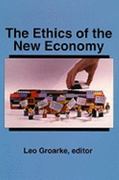Following are questions that need to be answered. Hope you can answer them with honesty and integrity. thank you
Alfred Marshall (1842 - 1924) image source: https://en.wikipedia.org/wiki/Alfred_Marshall#/media/File:Alfred_Marshall.jpg) Alfred Marshall combined the liberalism of the Classical School with social reforms which marked the start of Neo-Classicism. He founded the Cambridge School of Economics where one of the objectives of the School was to present a synthesis of major ideologies of economic thought. Marshall did not do away with the existing economic doctrines but reconstructed them, modified and supplemented them, and made them more predictable in accordance with existing conditions.Marshall's Economic Concepts 1. Definition and scope of Economics He defined Economics as a study of man and of wealth. He wanted to study Economics as a normative science. 2. Wants and satisfaction He classified wants as necessaries, comforts, and luxuries. He asserts that consumption is the beginning and end of all economic activities. Production comes afterwards. 3. Scissor analogy of demand and supply analysis Marshall compared demand and supply to the two blades of a pair of scissors. These blades meet when one cuts a piece of paper; thus, when demand and supply meet this results to a price, that which is called the equilibrium price. The interaction of demand and supply can be clearly illustrated graphically by the intersection of the demand and supply curves.4. Consumer surplus Consumer surplus is defined as the excess of price which a person would be willing to pay rather than go without the thing, over that which he actually does pay. Graphically, consumer surplus is measured by the area under the demand curve above the going price. 5. Elasticity of demand Marshall classified the elasticity of demand into five (5) parts: 1.) absolutely. elastic; 2.) highly elastic; 3.) elastic; 4.) less elastic; and 5.) inelastic. As a general rule, demand for comfort goods is elastic, for absolutely necessary goods, inelastic. 6. Representative firm Alfred Marshall claimed that there is need to study a "representative firm" to understand the long -life normal cost of producing a commodity relative to a given aggregate volume of production. There is need to study the expenses of a representative producer for that aggregate volume. The representative firm must be one which has had a fairly long life and fair success which is managed with normal ability and which has normal access to the external and internal economies which belong to the aggregate level of production. The representative firm, in a sense, is an average firm which can be studied to better understand an industry or a country. 7. Quasi-rent Quasi-rent refers to the additional income to a factor, other than land, which is similar to rent. Marshall used this term to explain, particularly for the short run, returns derived from machines and other man-made appliances.. 1Quasirent Quasi-rent refers to the additional income to a factor, other than land, which is sjgjlarutg rent. Marshall used this term to explain, particularly for the short run, retums derived from machines and other manmade appliances. Principle of substitution sa generatmniie, the sum of the supply prices of factors chosen by the producers which are best for their purpose, is less than the sum of the supply price of any other set of factors which could be substituted for them. . Stationary state A stationary state is one where the general conditions of production, consumption, exchange, and distribution are motionless. The stationary state has been taken to be one in which population is stationary, where both population and weaith are growing at the same rate. There is no scarcity of land, little change in the methods of production and in the conditions of trade. 10. Short run and the long run periods Production goes through two periods, the short run perjgd and the long run period. In the short run, the producer works with factors that are variable and some that are xed. Since the period is not enough to vary the quantity of some factors, these remain xed; on the other hand, the quantityr of some factors can be easily changed by the producer which makes them variable. in the long run period, all factors used and combined by the producer are variable due to the length of time which allows the producer to vary their quantities. 11. Four types of prices that are governed by demand and m First, is the market price which is the price of the stock of a commodity in question and which is on hand. Second, is the normal price in the short run which is the price of the commodity for a few months or a year. Third, is the nomial price in the long run which is the price for several years. The fourth refers to the secular movements of the normal price caused by the gradual growth of loiowtedge. 12. Theory of value This theory is the theory of price which asserts that price is equal to the value of a good. Alfred Marshall helped shape many of the principal elements of what became the microeconomic core of NeoJGlassical Economics: static partial equilibrium analysis, the demand and supply model, the liguseggld and the rm as basis of demand and supply, and a vast array of tools of partial equilibrium analysis, which include the concepts that were previously discussed. Much of Microeconomic Theory is Marshallian Economics. B. Alfred Marshall's concepts: 4. Analyze and explain the core of Marshall's theory on the determination of equilibrium price using demand and supply analysis. 5. Understand the use of Marshall's period analysis, the short run, long run, and market period into his economic theory; and then explain it. 6. Explain how the economic agents of production, land, labor, capital, and organization can lead to increasing and diminishing returns. 7. Discuss and Analyze the Marshall's Economic Concepts one by one












